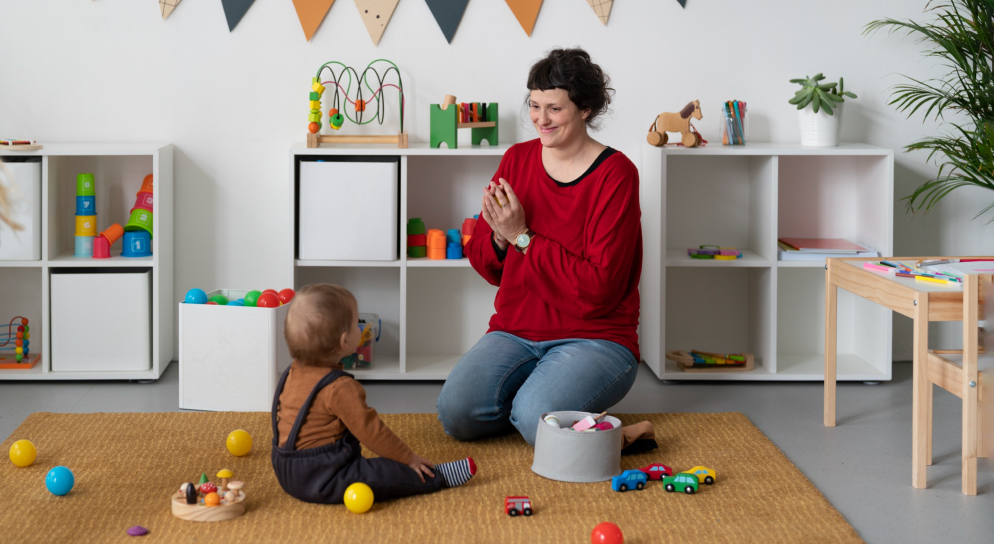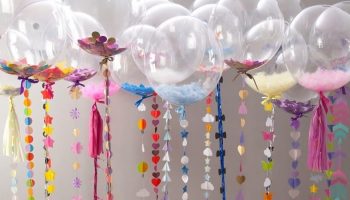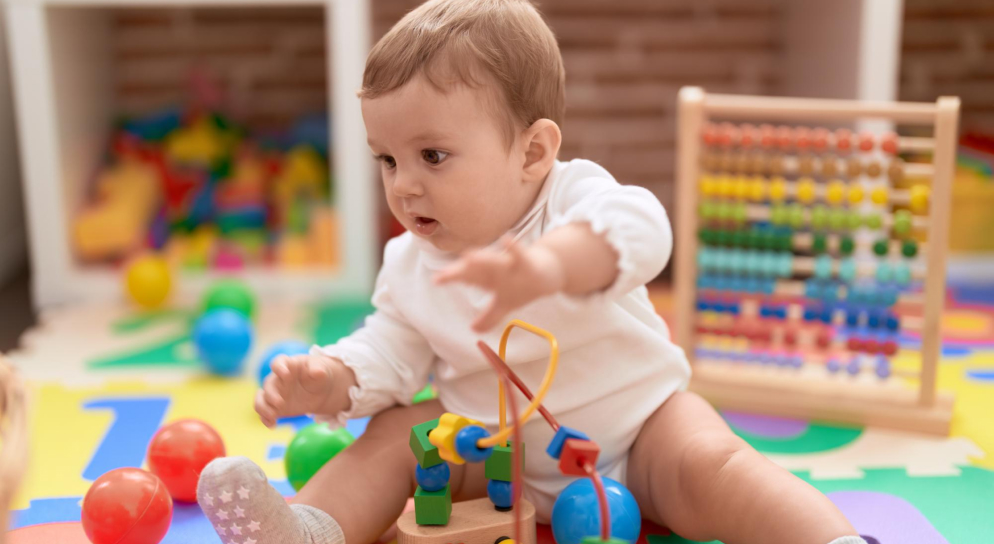Choosing a daycare facility for your infant can be a daunting task. You want to make sure that your baby is in good hands, and that the environment is safe, clean, and stimulating. But how can you tell if a daycare facility meets these standards? What are the signs of a safe infant room at daycare facilities?
In this article, we will share with you 10 signs that you can look for when you visit a daycare facility. These signs will help you assess the quality and safety of the infant room, and give you peace of mind that your baby is well cared for.
Things to Keep in Mind while Choosing Infant Room at Daycare!
Despite common fears, psychologists reassure you that daycare won’t harm your child. In fact, it’s great for their social skills.
Still, it’s normal to feel nervous about trying daycare for the first time; it’s a huge decision. Finding the perfect infant room at daycare is key to your child’s growth.
We’ve put together three main things to look for in a daycare. By the end of this article, you’ll be ready to make a confident decision that keeps your baby secure. Keep reading to learn how to pick the best daycare and put your worries to rest.
1. Thorough Staff Training

When you visit a daycare, the peace of mind about your little one’s safety starts with the people who provide infant care. Look for strong evidence of staff training in safe infant care practices.
This means every caregiver in the room should hold current certifications in infant CPR and first aid. They must be trained in emergency procedures and understand how to manage infants with special healthcare needs.
Also, check if the daycare uses a proper staff-to-infant ratio as Child Care Aware recommends. This ensures that each baby receives individual attention and care.
The caregivers should also participate in ongoing education to stay sharp in the latest safety protocols.
2. Cleanliness And Sanitization
Immaculate conditions are non-negotiable for safe childcare. Surfaces and toys must be cleaned between uses. Floors should be free of small objects that could pose a choking hazard to crawlers and explorers.
The diaper changing stations need to be disinfected after each use. Also, hand-washing stations should be accessible. Staff must use them often.
High-quality infant care also involves a strict sickness policy. Facilities with good hygiene practices require sick children to stay home to prevent the spread of illness. Policies like these protect your child and are hallmark indicators of conscientious childcare providers.
3. Developmentally Appropriate Environment
Your third key indicator to inspect in an infant care setting is whether the environment is tailored for infants. Furniture should be sturdy and age-appropriate, with cribs and play areas meeting the latest safety standards. There should be plenty of space for babies to move and explore.
Exploration at a young age helps with development. So, the daycare facility should have a variety of sensory toys. They promote growth in this critical phase of life.
In this context, “appropriate” also means that the toys are non-toxic and free from any parts that might come loose and be swallowed. Inspect the toy selections and activity areas yourself.
4. Thorough Staff Training
When you visit a daycare, the peace of mind about your little one’s safety starts with the people who provide infant care. Look for strong evidence of staff training in safe infant care practices.
This means every caregiver in the room should hold current certifications in infant CPR and first aid. They must be trained in emergency procedures and understand how to manage infants with special healthcare needs.
Also, check if the daycare uses a proper staff-to-infant ratio as Child Care Aware recommends. This ensures that each baby receives individual attention and care.
The caregivers should also participate in ongoing education to stay sharp in the latest safety protocols.
5. Cleanliness and Sanitization
Immaculate conditions are non-negotiable for safe childcare. Surfaces and toys must be cleaned between uses. Floors should be free of small objects that could pose a choking hazard to crawlers and explorers.
The diaper changing stations need to be disinfected after each use. Also, hand-washing stations should be accessible. Staff must use them often.
High-quality infant care also involves a strict sickness policy. Facilities with good hygiene practices require sick children to stay home to prevent the spread of illness. Policies like these protect your child and are hallmark indicators of conscientious childcare providers.
6. Developmentally Appropriate Environment
Your third key indicator to inspect in an infant care setting is whether the environment is tailored for infants. Furniture should be sturdy and age-appropriate, with cribs and play areas meeting the latest safety standards. There should be plenty of space for babies to move and explore.
Exploration at a young age helps with development. So, the daycare facility should have a variety of sensory toys. They promote growth in this critical phase of life.
In this context, “appropriate” also means that the toys are non-toxic and free from any parts that might come loose and be swallowed. Inspect the toy selections and activity areas yourself.
7. Variety Of Toys And Activities.
A safe infant room at daycare facilities also has a variety of toys and activities.
This means that the infant room has a range of toys and materials that are colorful, textured, and interactive, and that the caregivers offer different activities that are based on the infants’ interests, abilities, and developmental stages.
A variety of toys and activities enhances the infants’ cognitive, physical, social, and emotional skills, and keeps them engaged and entertained.
8. Open And Frequent Communication
A open and frequent communication is essential for a safe infant room at daycare facilities.
The infant room should has a clear and effective way of communicating with the parents, and that the caregivers provide regular updates and feedback on the infants’ progress, behavior, and needs.
A open and frequent communication ensures that the parents are informed and involved in their infants’ care, and that the caregivers are responsive and attentive to the parents’ concerns and questions.
9. Safe And Age-Appropriate Design
A safe and age-appropriate design is another sign of a safe infant room at daycare facilities. This means that the infant room has a spacious and clutter-free layout, and that the furniture, toys, and equipment are sturdy, stable, and suitable for infants.
A safe and age-appropriate design avoids potential hazards such as sharp edges, loose wires, choking hazards, and falling objects, and ensures that the infants have a fun and stimulating environment to explore and learn.
10. Positive And Reputable Reputation
A positive and reputable reputation is the final sign of a safe infant room at daycare facilities.
This means that the infant room has a good track record of providing safe, reliable, and satisfactory service, and that the infant room has a high rating and positive reviews from other parents.
A positive and reputable reputation indicates that the infant room has a high standard of excellence, and that the infant room is trustworthy and dependable.
The Best Infant Room At Daycare
The best infant room at daycare will make you feel confident and at ease. Only settle for a place where the staff values robust training. Cleanliness must be a priority, and the environment should have the safety and development of your child in mind.
Look for these three signs as you pick a daycare that keeps your baby’s best interests at heart. Our kids section has even more tips to help out with parenting. Explore our blogs for more advice.
Read Also:




























